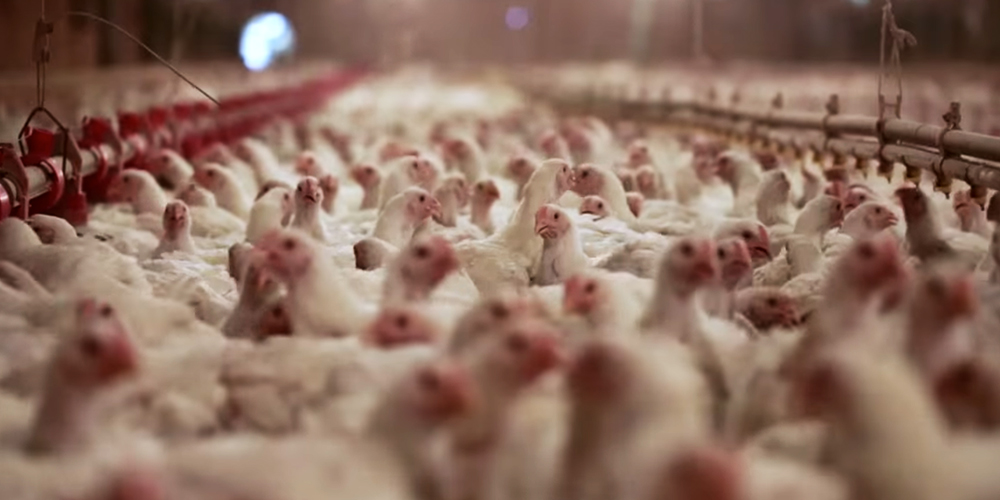2015 was a banner year for the fast food industry. One might even say egg-cellent. And that’s where my egg puns stop. I couldn’t help it, I apologize. In all seriousness, several franchises including McDonald’s and Panera set timelines to convert the majority or all of the eggs they use to cage-free. Even Walmart is planning to completely switch all of their eggs to cage-free by 2025.
So this is the part where we all jump for joy in celebration of world peace and mother nature, right?

GIF courtesy of giphy.com
Well, yes and no. Sadly, the poultry business is a tricky and confusing affair when it comes to deciphering what their labels actually mean. Here is a small breakdown for the very complicated saga of raising chickens.
When chickens are raised in a conventional setting, about 15 birds are kept in a cage for their whole life. They have less space than the surface of a sheet of paper and are unable to spread their wings or walk around, restricting them from fully developing physically. Pretty sad, right?

GIF courtesy of giphy.com
So when people see “cage-free” on a carton of eggs, they like to imagine flocks of chickens pecking around in a meadow, only entering a coop to sleep. Sadly, that may not actually be the case.
Cage-free eggs come from chickens who are not confined to cages (who would have guessed) and are actually able to travel around and spread their wings with an average of 1 square foot to their name. However, there are no requirements for outdoor access in order to meet cage-free status, so most commercial cage-free animals can be found in large indoor colonies with hundreds of thousands of their closest friends.

Photo courtesy of wired.com
Most of you are probably thinking about how little space 1 square foot is. Not to mention, the thought of being forced to walk around in one’s own manure all day. Hey it’s gross, but it’s a fact.
When imagining these cons, however, cage-free needs to be looked at as the lesser of two evils when compared to conventional raising. Of course we would love for all chickens and their eggs to be happy-go-lucky animals with the freedom to mosey about the pasture as they wish.

GIF courtesy of disneyparks.com
Unfortunately, the dream is a little unrealistic for big name companies to switch their whole business plan and factory set ups to meet those needs, not to mention the amount of moola it would cost. Even fast-food companies aren’t promising a complete switch to cage-free for about 10 years.
Though the thought of having hundreds of thousands of chickens crammed into a giant barn doesn’t seem like an ideal scene, a silver lining has to be looked at. Matt O’Hayer, founder of Austin-based pasture-raised egg and butter company Vital Farms, put the issue into a great perspective. “I’d rather be in the mosh pit at the front of the biggest concert in history rather than squeezed in an elevator with 15 people for my entire life,” expanding on the subtle benefits of cage-free eggs.
The food policy director of the US Humane Society sees this movement to be the first step in a very long process to more sustainable and acceptable expectations for the poultry business. He states, “for now our focus is getting these hens out of the cages, then we’ll go from there.”
Think of this movement as the first of many victories for humane food production after ages of set backs and losing streaks, similar to our man Leo winning an Oscar this year.

GIF courtesy of giphy.com




